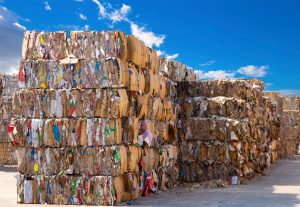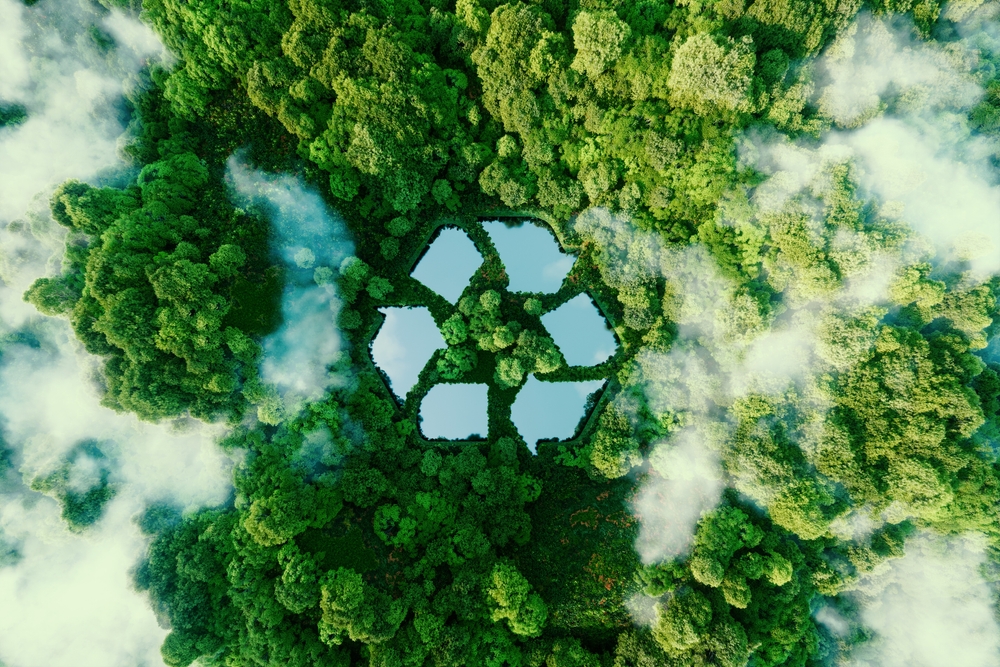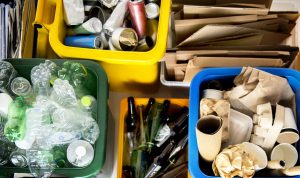Did you know that the global paper market produces over 400 million metric tons of paper and cardboard each year? This mind-boggling number prompts even more questions. Where is all this paper used? And what happens to it once it has served its purpose?
For starters, paper production continues to be an important industry. Paper is a ubiquitous material that is used in a variety of applications including packaging, home products, and office supplies.
Not only is paper an essential material, but in recent years its demand has significantly increased. One reason for that is the boom of online shopping.
1. Global Paper Production Increases by 3% in 2021

Just in the U.S alone, 48.2 million metric tons of packaging paper and paperboard were produced in 2020.
The more paper we produce, however, the more the need to properly dispose of it, and recycling is a working solution with many benefits.
2. 1 Ton of Recycled Paper Saves Up To 4000 kWh Of Energy

It’s hard to imagine exactly how much power 4000 kWh of energy is, but believe us – it’s a lot! Just imagine that the average American household consumes about 893 kWh per month. That’s electricity for about 4 and half months.
Paper recycling has the potential to save us incredible amounts of energy.
But what exactly does the process of paper recycling entail?
Paper recycling is the process of converting waste paper materials into new paper products. Recycling existing paper helps us:
- Save trees – 1 ton of new paper requires the wood of 12 trees
- Save energy – up to 70% compared to the production of new paper
- Save water – recycling paper saves up to 80% of the water needed for new paper
Additionally, recycling helps keep our atmosphere and air cleaner by reducing green gas emissions. That’s because the paper fiber contains carbon (once absorbed by the tree) that when recycled is kept out of the atmosphere for longer.
Furthermore, the methane released when paper breaks down is also a contributor to global warming and when we recycle paper we prevent it from getting out into the atmosphere.
Luckily, paper is one of the most recyclable materials on the planet and the process of re-introducing reclaimed paper back into use is relatively straightforward.
3. In 2020, About 66% Of The Paper Used In The United States Was Recycled

According to the American Forest & Paper Association (AF&PA), 65.7 % of the consumed paper in the U.S. for 2020 was then recycled. That accounts for a 66% paper recycling rate – 1% higher than that in 2019.
Paper recycling continues to improve and marks a double increase in the recycling rates compared to 1990 when the rate was 33.5%.
The increased rate of recycling is important because instead of ending up in landfills this valuable resource is returned to us, with a significant decrease in the harmful consequences waste has on the environment and our own health.
4. A Ton Of Recycled Paper Saves More Than 3.3 Cubic Yards Of Landfill Space

Landfills are problematic, to say the least. First, there is always the issue of space. With the U.S producing about 12% of the world’s municipal solid waste (MSW), we are always in a race to find new land to store and treat our trash.
To create room for our waste we usually have to move further into wildlife habitats, which consequently ends up upsetting the balance of living for those species and forcing them to either flee or interact with humans unnecessarily.
Unfortunately, our struggles don’t end there, as once trash ends up in our landfills, decomposing processes start releasing gasses like methane.
Methane is one of the most potent greenhouse gasses that trap sunlight in our atmosphere and is one of the most damaging contributors to global warming. Countless eco-systems end up destroyed or ,least of all, imbalanced as a result of the warming of the atmosphere.
Furthermore, together with methane, landfills produce carbon dioxide and water vapor, with trace amounts of oxygen, nitrogen, hydrogen, and nonmethane organic compounds. These gasses also harm the climate and create smog which we end up breathing.
Paper recycling is one way we can help alleviate some of the burden created by our landfills.
5. Global Waste Paper Recycling Market Forecasted To Grow To $5.6 Billion by 2028

The good news is that the paper recycling industry continues to develop and more investments are poured into creating a system that allows us to recycle more and more materials, including paper.
In the United States, for example, the recycling and reuse industry is comprised of over 56,000 companies that also support the labor market by creating jobs for over 1.1 million people.
One study found that an investment of $17 billion in the improvement of our recycling solutions has the potential to bring twice as many economic benefits, generating about $30.8 billion in wages, taxes, landfill savings, and the value of recyclables, over 10 years.
Recycling is an important part of our sustainable economic future and needs the attention of consumers, businesses, waste management companies, and governments.
On A Closing Note
Sustainability is the way forward, and recycling is an essential part of our eco-friendly future. Paper recycling, in particular, is one very well-established way to ensure we conserve natural resources, support the economy, and keep our environment clean.
So next time you hold a piece of paper in your hand, think of the enormous potential it has, and recycle it.







